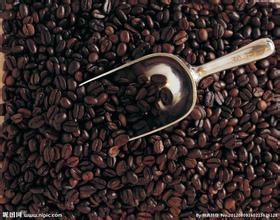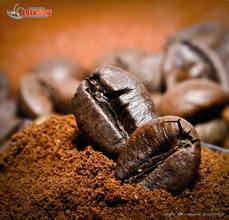Uganda Coffee Bean flavor brand video explains grinding method
Uganda coffee bean flavor brand video explains grinding method
Mbale in Mount Elgon on the east and other production areas near the border with the Democratic Republic of the Congo on the west take Wugar as the export name. Officially listed grades are Oaganic (organic), Bugisu AA, Bugisu A, Bugisu B, Bugisu PB, Wugar, Drugar and others not listed. In order to find good Ugandan coffee, you must first identify Bugisu AA, A and PB grades, but because the country is landlocked, transportation problems are more frequent, so often you will find low moisture content, green appearance of green beans, but Ugandan coffee is not the type of coffee that emphasizes rising aroma
Uganda's best coffee is mainly grown in the Elgon and Bugisu mountains along the Kenyan border in the northeast and in the Ruwensori mountains in the west.
Coffee cultivation in Uganda is entirely family-based and small-scale. The livelihoods of 25 per cent of the population are linked to coffee production. There are about 500000 farms growing coffee, but mainly producing roberts. Robusta accounts for 90% of coffee production, with the rest becoming Arabica coffee. Arabica and Robusta are harvested from October to February.
Uganda mainly exports coffee to the European Union, with Germany, Italy and other countries as its largest coffee buyers.
Uganda is one of Africa's leading coffee producers, accounting for more than 70% of its total exports, while Uganda is also the home and major producer of Robbs specialty coffee. In the 1960s Uganda's coffee production remained at 3.5 million bags per year. By the mid-1980s, largely for political reasons, coffee production had fallen to 2.5 million bags a year. But coffee production is picking up again and is now about 3 million bags a year. It is mainly exported to the European Union, of which Sweden, Italy and other countries are its largest coffee buyers. Uganda, located in eastern Africa, is a landlocked country across the equator. Uganda borders Sudan to the north, Kenya to the east, Lake Victoria to the southwest, Tanzania and Rwanda to the south, and Congo to the west.
Ugandan coffee beans have a unique flavor and fragrance, which is very suitable for making Italian and other flavors of coffee. More importantly, Ugandan coffee beans are strictly screened according to international market standards to ensure their high quality and pollution-free characteristics.
Africa is home to Arabica and Robusta, two major coffee varieties, while Uganda, located in eastern Africa and known as the "highland water" and "pearl of East Africa", is believed by many to be the birthplace of Robusta.
Uganda is one of the few countries in the world where Arabica and Robusta can be grown simultaneously, with the right environment and climate for coffee growing. Uganda is located at an altitude of 900-2000 meters, with annual temperatures of 15℃-28℃.

Important Notice :
前街咖啡 FrontStreet Coffee has moved to new addredd:
FrontStreet Coffee Address: 315,Donghua East Road,GuangZhou
Tel:020 38364473
- Prev

Introduction of rose summer coffee beans in Panamanian Alida Manor Red Wine treatment Emerald Manor
Panamanian Alida Manor Red Wine treatment Emerald Manor Rose Summer Coffee beans introduction Panama Jade Manor (La Esmeralda) is located in the corner of Baru volcano, so the coffee beans produced in this area are mostly named after Baru Mountain, the area around Boquete is scenic, there are quite a lot of leisure hotels, villa, resort estates, and even along the important river Rio Caldera.
- Next

Taste and flavor of coffee beans in Honduras description of grinding scale production area
The taste and flavor of Honduran coffee beans describe the coffee beans refined in this way in the grinding scale area, which are slightly sour and slightly bitter. Almost all coffee beans produced in Brazil, Ethiopia, Yemen and other places are obtained in this way. The disadvantage of this method is that it is easily affected by weather and is easy to be mixed with defective beans and other impurities. Therefore, it is necessary to
Related
- Detailed explanation of Jadeite planting Land in Panamanian Jadeite Manor introduction to the grading system of Jadeite competitive bidding, Red bid, Green bid and Rose Summer
- Story of Coffee planting in Brenka region of Costa Rica Stonehenge Manor anaerobic heavy honey treatment of flavor mouth
- What's on the barrel of Blue Mountain Coffee beans?
- Can American coffee also pull flowers? How to use hot American style to pull out a good-looking pattern?
- Can you make a cold extract with coffee beans? What is the right proportion for cold-extracted coffee formula?
- Indonesian PWN Gold Mandrine Coffee Origin Features Flavor How to Chong? Mandolin coffee is American.
- A brief introduction to the flavor characteristics of Brazilian yellow bourbon coffee beans
- What is the effect of different water quality on the flavor of cold-extracted coffee? What kind of water is best for brewing coffee?
- Why do you think of Rose Summer whenever you mention Panamanian coffee?
- Introduction to the characteristics of authentic blue mountain coffee bean producing areas? What is the CIB Coffee Authority in Jamaica?

